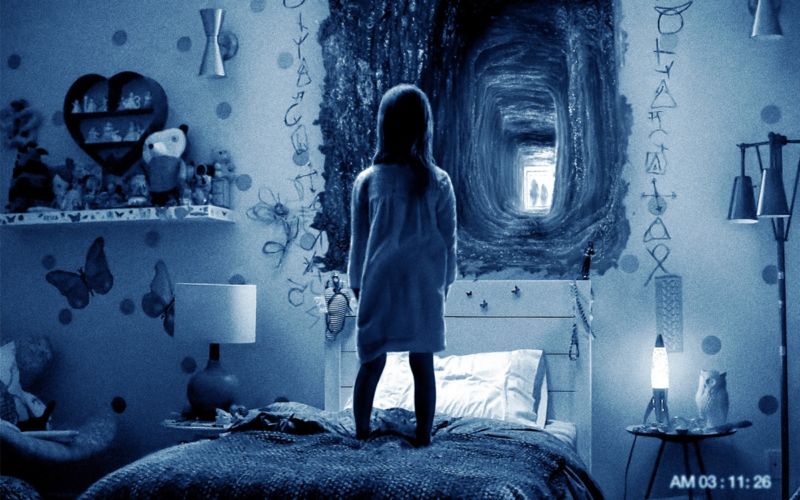
Parents of young children often struggle to assess how upsetting a particular film will be for their offspring. Ratings systems can help but tend to be subjective assessments. It might soon be possible to objectively evaluate how intense films might be for younger viewers just by analyzing the chemicals that audiences emit when they breathe, according to a new study by researchers from the Max Plank Institute for Chemistry in Mainz, Germany. They described their findings in a new paper in PLoS ONE.
Sure, it seems a bit far-fetched, but tracking the emissions of volatile organic compounds (VOCs) is an active and entirely legitimate area of research. Plastics, for instance, emit VOCs as they degrade over time, thanks to exposure to light, heat, moisture, and pollutants. This so-called "off-gassing" results in a serious issue for museum conservationists and libraries, among others.
People watching a movie in the cinema emit certain chemical signals into the surrounding air.
Every country has its own rating system for films, designed to guide consumers as to what kinds of content they might encounter while watching a given film. While such systems are supposedly based on objective criteria—how much violence, sexual content, and bad language is included—there is actually quite a bit of subjective variability involved in making these determinations. And the public's sensibilities can shift over time: films that were deemed shocking in the 1930s strike today's audiences as remarkably tame. It matters because a film's rating has a direct impact on how broad an audience it can reach.
Prior studies had shown that people watching a movie in the cinema emit certain chemical signals into the surrounding air, a response to specific scenes. And it's a reproducible effect, holding up over multiple screenings of the same film. According to the latest paper, CO2 levels in a theater will rise until it hits equilibrium.
But even after that point, if the pulse and breathing rates increase among the audience in unison—perhaps in response to a particularly frightening or emotionally intense scene—it disturbs that equilibrium such that it becomes possible to detect several hundred VOCs. And certain chemicals are linked to certain types of scenes, especially if they involve suspense or comedy.

So it seemed like this "crowd breath" might be a good way to assess how audience members react to specific scenes in films, especially those involving violence, sex, or strong language. This new German study involved 135 screenings of eleven different movies over eight weeks (winter 2013-14 and winter 2015-16) at Cinestar multiplex theaters, with more than 13,000 audience members participating. The films screened included The Secret Life of Walter Mitty, Hunger Games: Catching Fire, Star Wars: The Force Awakens, and Paranormal Activity: Ghost Dimension.
By connecting a mass spectrometer to the cinema's ventilation system and taking measurements every 30 seconds, the researchers were able to monitor even slight shifts (at parts-per-trillion levels) in the chemical composition of the air inside the theater as audiences watched a film. They took data on 60 different compound concentrations and then compared that data to the age classification for the films being screened.
(They used the German rating system: "FSK 0" is suitable for all ages; "FSK 6" means it is suitable for ages 6 and older; "FSK 12," suitable for ages 12 and older; "FSK 16" suitable for ages 16 and older; and "FSK 18," for adults 18 and older.)
"Evidently, we involuntarily squirm back and forth on our cinema seat when we become nervous or excited."
Of the VOCs measured, isoprene proved to be the most reliable indicator for differentiating among the various age classes. Isoprene is a byproduct of our metabolism that gets stored in muscle tissue. It gets released through our skin and breath when we move around; the more we move, the more isoprene gets released.
So what does that have to do with watching a scary movie? "Evidently, we involuntarily squirm back and forth on our cinema seat when we become nervous or excited," lead author Jonathan Williams says. The more nervous or excited moviegoers are, the more isoprene they emit. This makes isoprene a measurable indicator of how stressful a film is, and thus it could be a good way to gauge the impact a given film would have on, say, young children. "Our approach could therefore provide an objective criterion for deciding how movies should be classified," he says.
This study established proof of concept for using isoprene concentrations as an indicator of stress or tension, according to Williams. The next step is to determine whether other VOCs we emit could serve as chemical fingerprints for other emotional states. This is difficult to determine in a live cinema setting, given how quickly scenes and the corresponding emotions they evoke occur during a screening. But it might be possible to do so under tightly controlled laboratory conditions.
DOI: PLoS ONE, 2018. http://dx.doi.org/10.1371/journal.pone.0203044 (About DOIs).
reader comments
22